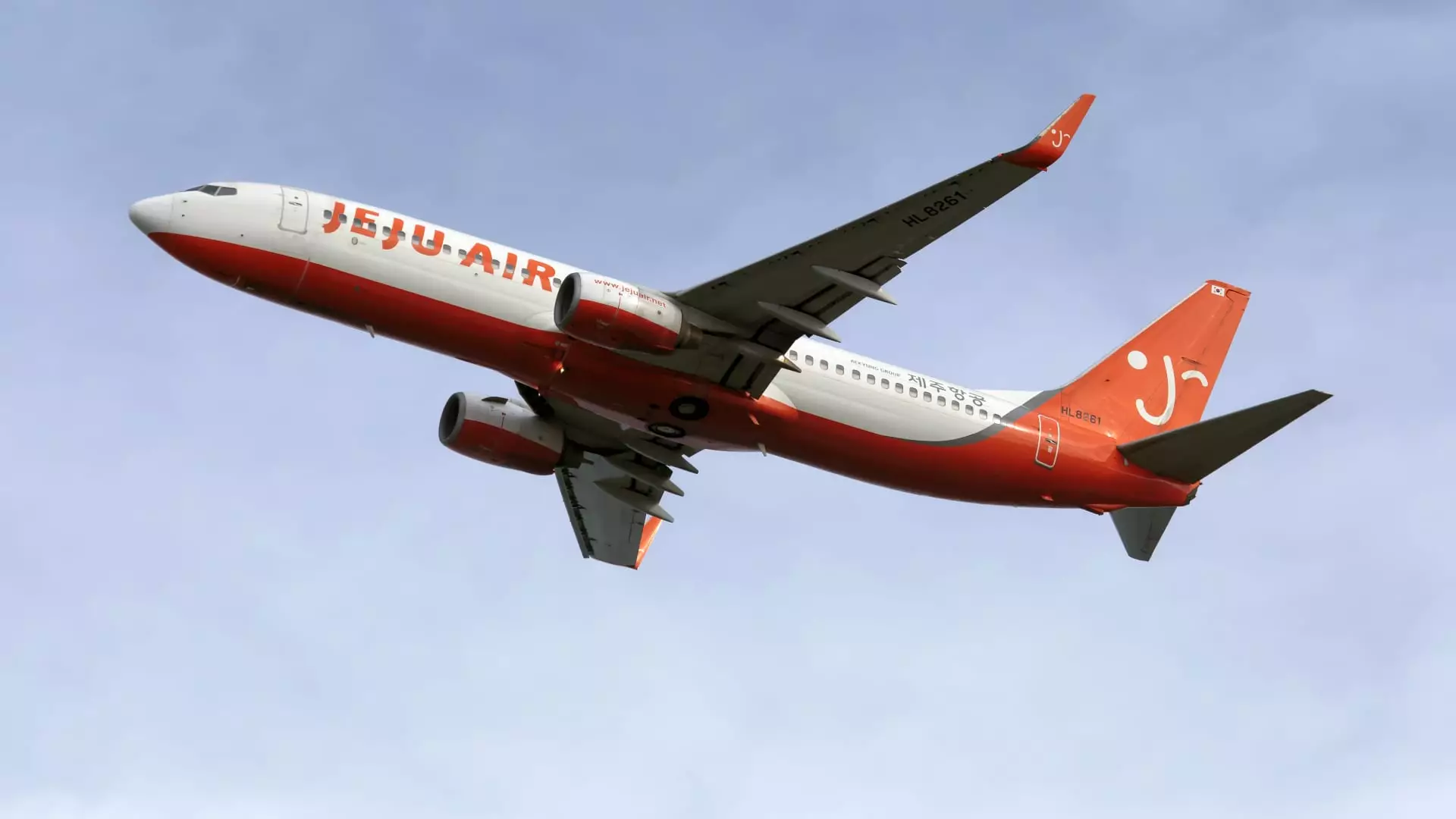In a somber turn of events, a Jeju Air flight met with disaster at Muan International Airport in southwestern South Korea, marking one of the most devastating air-related incidents to occur in the country in decades. The narrow margin of survival saw only two of the 181 passengers escape unscathed as the plane tragically belly-landed sans landing gear and was engulfed in flames. This catastrophic event raised immediate alarms regarding the safety protocols surrounding aircraft operations and maintenance, especially for the widely used Boeing 737-800 model.
The Boeing 737-800 has long been celebrated as a workhorse of the aviation industry, comprising approximately 17% of the global commercial passenger jet fleet, with a solid reputation for safety and reliability. However, the recent incident has prompted South Korea’s acting president, Choi Sang-mok, to call for emergency inspections across the country’s fleet of Boeing 737-800 aircraft. Notably, the incident shines a light on the complexities involved in managing legacy aircraft that, despite remarkable safety records, can come with inherent risks, especially as they age.
While it is critical to investigate the mechanical performance and condition of the aircraft involved in the accident, it is equally important to consider how operational factors play a role in aviation safety. The fact that this model performed reliably for over a decade prior to the accident adds layers of complexity to the investigation, as it brings into question not just mechanical reliability but also human factors such as pilot response and cockpit management during crisis scenarios.
As investigators delve into the circumstances leading to the crash, various theories have emerged, complicating the narrative surrounding the incident. Among the speculated causes is a possible hydraulic malfunction, which would have inhibited the landing gear from deploying. What further complicates this theory is the assertion from experts like Richard Aboulafia, who contends that the likelihood of discovering a design flaw in the Boeing 737-800 is minimal. This leaves the investigation grappling with the possibility of operational error or unprecedented external factors leading to such a catastrophic failure.
Another intriguing theory suggests the possibility of a bird strike knocking out the engines, which could have prevented pilots from executing emergency landing procedures. This hypothesis underscores the unpredictable nature of aviation, wherein a split-second event can cascade into dire consequences. The urgency of response during emergencies cannot be overstated, and in this case, the failure to deploy the landing gear amidst potential engine failure illustrates a critical juncture that demands rigorous review.
Impacts on Aviation Safety Protocols
The repercussions of this tragic incident extend well beyond the immediate loss of life and destruction. It necessitates a reevaluation of the existing aviation safety protocols, particularly for aircraft like the 737-800 that are still widely serviced across the globe. Questions around the adequacy of training for flight crews in handling unforeseen hydraulic failures or engine troubles must be addressed. Additionally, the incident may spur an industry-wide conversation about the importance of thorough maintenance schedules and real-time data monitoring systems designed to preemptively identify mechanical failures.
Furthermore, the collaboration between the National Transportation Safety Board (NTSB) and international teams underscores the global stakes involved. The involvement of various agencies such as Boeing and the Federal Aviation Administration (FAA), along with South Korea’s aviation authorities, suggests a multifaceted approach to ensuring that recommendations derived from this investigation are implemented not just locally, but worldwide.
The tragedy at Muan International Airport serves as a sobering reminder of the intricate web of factors that intertwine to facilitate safe air travel. As investigators work meticulously to decipher the events that led to the crash, all eyes will be focused not only on uncovering the truth behind this specific incident but also on the broader implications for the aviation industry at large. The loss of life is a tragic reminder that even the most trusted systems can fail without warning, and the quest for improved safety must remain a priority for all stakeholders in aviation.

